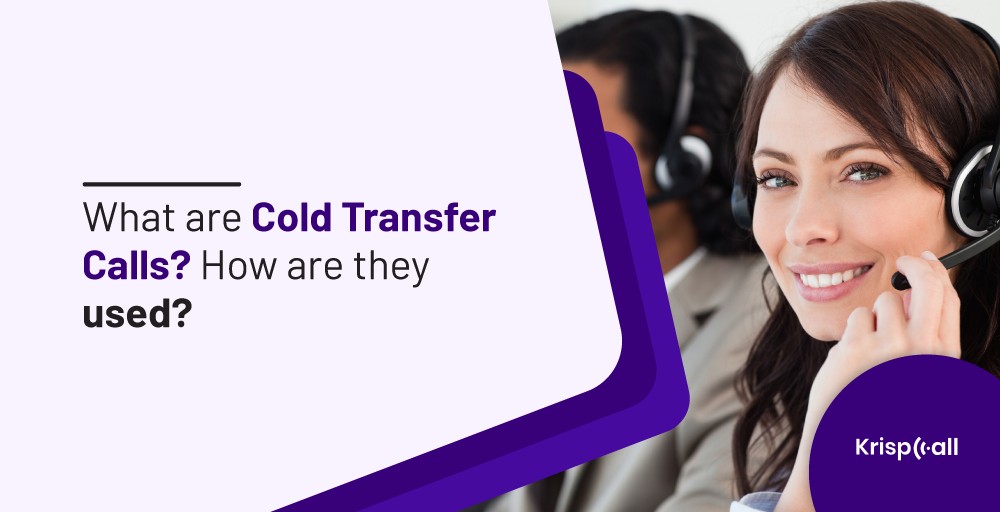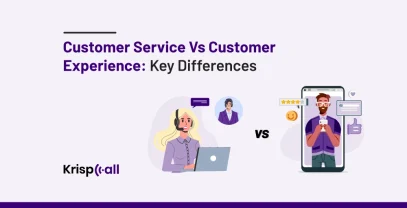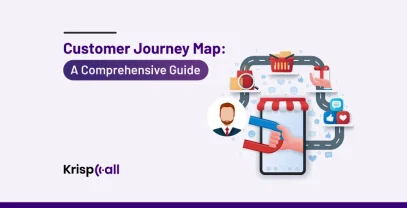Everyone isn’t an expert. Sometimes it is better to help or put someone on the call who knows better about the client’s complicated questions.
Call transfers are valuable during this situation. It lets agents immediately transfer live calls to an agent or an expert who has the knowledge or working experience to settle a complicated query that your caller is involved in understanding.
Call transfer helps 😊 to perform secure solutions to the customer’s problems without making them hold/wait in line for too long.
The cold transfer call is one of the types of call transfer that is also known as a blind transfer. It directly transfers a call to another new agent without first talking to them.
So indeed, what are cold transfer calls 🤔? How are they used?
In this blog, you’ll learn about cold transfer calls, how to enhance customer experience with cold transfer, how are they used, and warm transfer vs cold transfer: which is best and when to use.
🔑KEY HIGHLIGHTS
- Call transfers in a call center include warm, cold, and voicemail transfers, impacting efficiency and customer satisfaction.
- A cold transfer swiftly routes calls, optimizing efficiency for prompt assistance.
- Enhancing cold call transfers requires efficient routing to satisfy clients quickly, optimizing resource utilization, and meeting their needs effectively.
- Cold transfers in call centers quickly address customer issues using efficient data collection, IVR technology, and agent training, improving satisfaction with streamlined processes and personalized interactions.
- The call center prioritizes cold transfers for efficient call handling and streamlined processes, aiming to enhance customer satisfaction and reputation through advanced technology utilization.
- Cold transfers streamline response processes but may lead to customer frustration; KrispCall offers seamless call handling to mitigate these issues.
Let’s get started⬇️
What does a Call Transfer mean?
Call transfer is the process of redirecting an ongoing phone from one party to another, usually within the same organization or department.
When a caller gets the wrong department or team member, you can transfer their phone call to the appropriate agent rather than having them hang up and call a different number.
Likewise, call transfers are an ideal tool for quality customer service and provide a wonderful way to increase your agents’ performance and productivity. It improves call management ability and builds a commonplace across the business.
Get Phone Numbers for Your Call Center Easily.
Get super-affordable phone numbers from all over the world for your cloud-based call centers quickly and conveniently.
Select numbers :
What are the types of call transfers?
The right configured call transferring system will quickly connect an incoming call from your customers to the correct department.
However, a weak and inappropriate system can easily cause customers to have huge wait times and transfer the call to the wrong department, which upsets them or even causes them to hang up.
There are three main types of call transfers: Warm (assisted or attended) call transfer, Cold (blind) call transfer, and voicemail transfers, so let’s take a minute at each briefly.
1. Warm Call Transfer (Assisted/Attended Transfer)
A warm call transfer lets you have a short conversation with another agent or a contact in your team before transferring the call to the customer.
It provides an advantage in getting the necessary details about the customer’s query from another agent so that the customer doesn’t have to recount their question.
2. Cold Call Transfer (Blind Transfer)
Cold transfer directly transfers the call to the second agent that the client selects. The call can be accepted or rejected by the second agent.
3. Voicemail Transfer
Voicemail transfer is used when the third party is not available, and as an outcome, you may want to send the client to voicemail the information through a warm transfer.
While being transferred to voicemail repeatedly may irritate some consumers, most will willingly leave a message if it means getting a solution in the future.
What is a Cold Transfer?
Cold transfer also known as Blind Transfer happens when a call from one party is routed to another party without any prior communication or introduction between the caller and recipient. It can be useful when a caller reaches a different department. The decision to use cold transfer calls depends on the situation and the desired outcome.
The second agent may accept or ignore it to whom the call is transmitted. In the cold transfer, the customer or caller must re-explain their details to the new agent and illustrate why they contacted them.
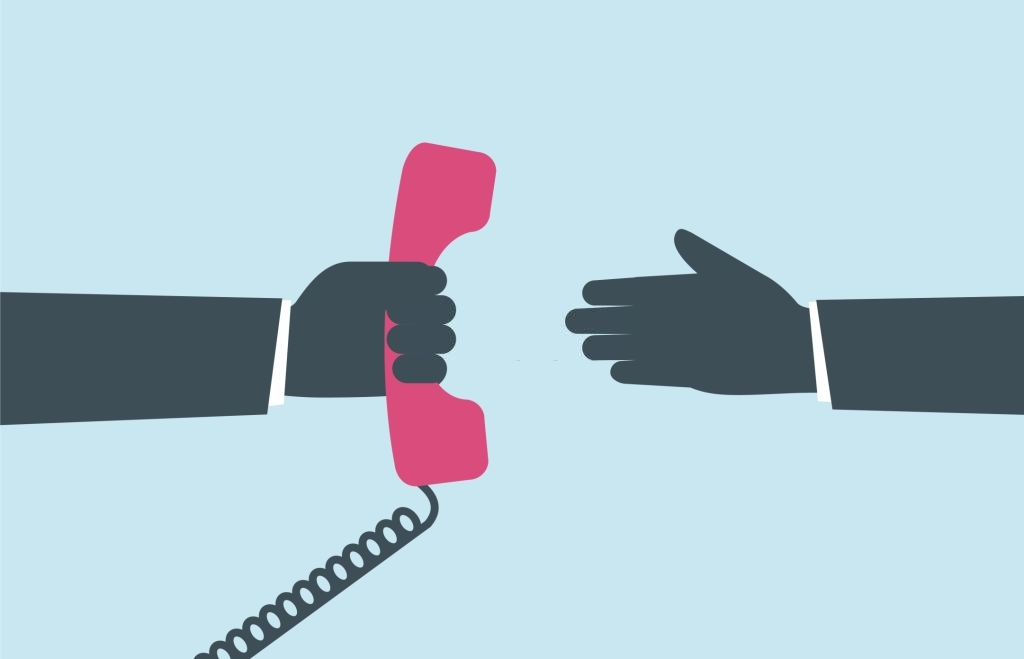
This entire procedure can be irritating for the caller. Repeating the problem, especially when the customer has called to express unhappiness, can be extremely irritating and infuriating, and cold call transfer does so.
Cold transfer was formerly considered the industry standard, but most companies are now opting for warm call transfer to boost responsiveness and customer happiness.
When customers call in a small call center that still uses cold transfer standards, your call is likely to be forwarded to the appropriate department without your status being discussed. As a result, you should provide a brief explanation of your concern after communicating.
If you’re unlucky and the agent transfers your call, you’ll have to go through the whole process again. This problem can also arise if the company employs a secretary who sends calls to the right agent without explanation.
Cold Transfer Example:
The phone rings and Harry picks up to a frustrated customer explaining an account problem. Harry wastes no time and quickly transfers the call to John, the tech expert. John promptly fixes the issue, saving the day with his swift action.
How to Enhance Customer Experience with Cold Transfer Calls?
Enhancement in the cold call transfer needs smartness and logic. It satisfies the client and saves you from a client’s loss. The below-illustrated cold transfer example can be an appropriate one.
Assume you’re in sales and you receive a call from a customer who needs assistance with a billing issue. She’s not interested in you; she’s interested in the billing department. And you, the salesperson, want your line released for new business or clients.
Transfer the client to the proper department’s call group once you’ve determined where she needs to go. Because the billing department does not receive as many calls as support or sales, there is no need for an introduction that can benefit you and also them.
How are Cold (blind) transfers used?
How are cold call transfers used will depend on how it is handled. In today’s fast-paced environment, customer demands their complex issue to be treated promptly and efficiently, with as little face-to-face (or phone-to-face) time as possible.
Your call center agent should strive to meet and exceed those expectations, which it can do with the correct cloud telephony technology and training.
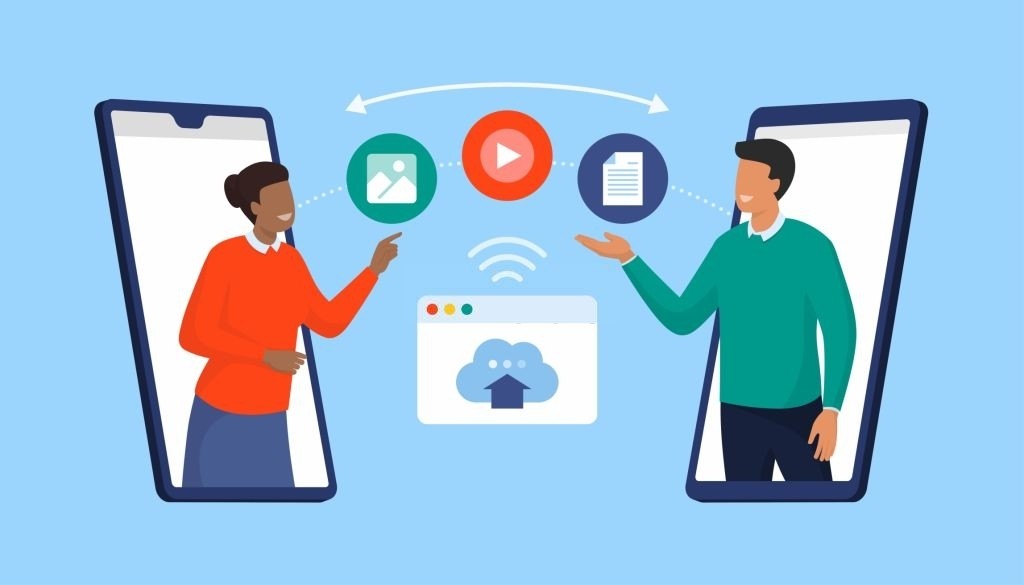
These are some of the concepts that can help you figure out how cold transfers are used efficiently and help in developing your business:
1. Through Effectiveness
A call center agent should be prepared to collect data using a rough scripted prompts template.
While not every individual who answers the phone should use the same conversation every time they speak with someone, offering your employees a broad script to follow can help them collect adequate, relevant information as fast as possible, in ways that feel natural and respectful to the customer calls, adding a personal touch.
2. Through IVR
IVR (interactive voice response) technology is one of the most effective techniques for getting the most out of customer conversations as quickly as possible.
Not long ago, there was a time when contacting a contact center meant going through numerous menus just to be thrown into a pool of waiting callers who appeared to be directed to agents at random.
That is no longer the case due to IVR technology. Callers can now address their concerns right away, and the system can use those concerns to better direct their calls.
Less wait time, better solutions supplied by more prepared employees, and improved levels of customer satisfaction result from this.
3. Through Training the Agents for Handling the Scenario
It’s critical to train your agents to correctly handle transfer procedures, especially if staff transfers are required. There will always be queries or concerns best addressed by specialized staff members, no matter how well-prepared your agents are.
The easiest method for your employees to deal with a scenario like this is to:
- Explain why you’re making the transfer and get permission from your caller first. The caller will not be “jumped around” by the chain of persons receiving their calls as a result of this.
- Make sure to include your details. If you are disconnected, your customer can request the last person they spoke with by name when directed, saving them at least one step in the process.
- Transfer the call and, if possible, remain on the line to explain the issue to your colleague and introduce the coworker to the client. This will transform the call from a chilly transfer to something far more welcoming to the caller.
Today’s call centers combine technology that captures more data upfront with personnel training that allows them to quickly get to the heart of a caller’s worries, ultimately building customer relationships.
It’s vital to take this two-fold strategy to equip your team effectively if you want a call center that continues to develop and solve problems for callers of all types.
Warm Transfer Vs Cold Transfer: Which is better & when?
Warm transfer and cold transfer offer unique purposes and are better suited for different conditions. So, choosing between warm transfer or cold transfer depends on your condition and business purposes.
A warm transfer involves informing the caller that they will be transferred and introducing them to the new agent before making the transfer. This enables a smooth transition and ensures that the caller is ready for the transfer. Warm transfers are often preferable when a caller wishes to speak with a specific individual or department and when providing personalized assistance.
On the other hand, cold transfers happen when the caller and recipient have no prior introduction or conversation. This type of transfer is normally quicker but may lead the caller to confusion or frustration. It suits the situation where the caller’s inquiries can be handled by any available representative, and speed is prioritized over personalization.
To choose the appropriate call-transferring method consider the purpose of the call and your company’s relationship with the caller. For example, warm transfers can be used for a great customer experience and faster resolution. If speed is important, a cold transfer may be an alternative but also be mindful of the potential drawbacks.
Conclusion
Cold and warm transfers both serve valuable purposes in the contact center environment.
Cold transfers can be a time-saving solution in specific situations but should be used carefully. They are used in situations where speed is prioritized over personalization such as when the caller’s inquiry can be handled by any available agent.
Krispcall is a cloud phone that provides a business telephone system and offers various inbound and outbound lines, call routing, voicemail, IVR, call management, and everything that meets all the needs of businesses of different types. You can schedule a free demo, to learn how KrispCall’s top-notch call transfer features handle all types of call transfers.
FAQ
What is the process of transferring calls in a call center?
Call center agents receive incoming calls on their desk phones. When a caller needs assistance from a different department or agent, the call center agents may transfer the call to the appropriate party. This transfer means rerouting the phone call from one desk phone to another, ensuring that the caller reaches the right department or agent without unnecessary hold times.
How does a cold transfer call contribute to a better customer experience?
While cold transfer calls may seem less personal, they ensure that the caller reaches the right department or agent promptly, reducing the need to repeat information and minimizing wait times. By addressing the caller’s needs efficiently, cold transfer calls contribute to the best customer experience.
Are there any limitations or drawbacks to using cold transfer calls?
Cold transfer calls may not always provide the most personal approach to addressing customer concerns. Additionally, if the issue is complex and requires customers to interact with a live agent, a cold transfer call may not be the most effective method for resolving the issue. Call center agents need to balance efficiency with providing excellent customer service to ensure customer satisfaction and maintain agent productivity.
How are cold transfer calls used in a call center?
Cold transfer calls are typically used in scenarios where the incoming call is routed to a specific department or agent who is best equipped to handle the caller’s needs. This method is employed when the caller’s issue requires immediate attention from a different department or when the caller reaches the wrong department initially.
When is a cold transfer call a better option than a warm transfer call?
A cold transfer call is often the most convenient way to handle an incoming call when there is limited staff available to handle live agent interactions. Additionally, if the caller’s specific issue requires immediate attention from a different department or agent, a cold transfer may be the better option.

